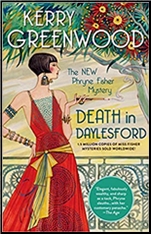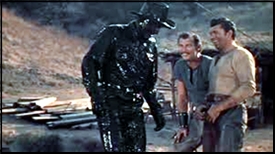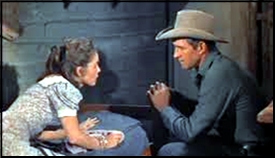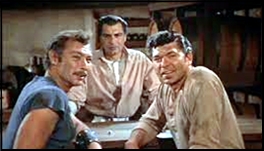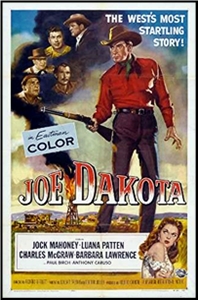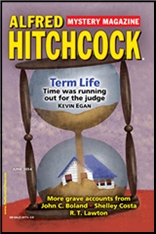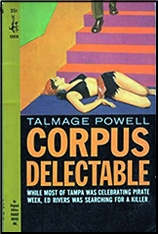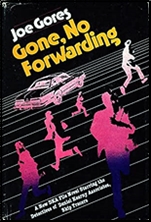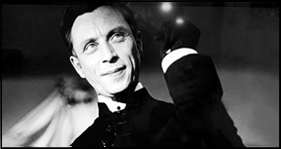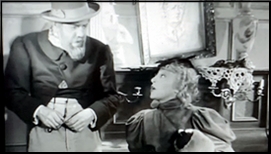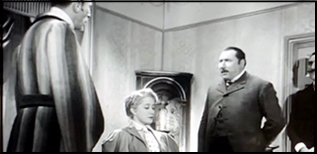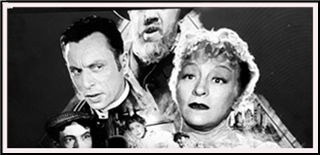Tue 8 Feb 2022
Reviewed by David Vineyard: PAUL TEMPLE – The Tyler Mystery.
Posted by Steve under Reviews[4] Comments
PAUL TEMPLE – The Tyler Mystery. Paul Temple #6. Hodder & Stoughton, UK, hardcover, 1957. [In this case, author Paul Temple is the pseudonym of Francis Durbridge & James Douglas Rutherford McConnell.] Reprinted as by Francis Durbridge: Hodder, UK< paperback, 1960. Based on the radio serial Paul Temple and The Tyler Mystery by Francis Durbridge.

This one happens to involve two writers not known as well on these shores as as they should be, Francis Durbridge was an international rival to Agatha Christie in the mystery genre whose radio and television plays have been adapted in multiple languages and countries and was best known here as the creator of mystery writer/detective Paul Temple and his ex-journalist wife Steve who adventured in sixteen radio serials on the BBC from the thirties on solving crimes in the Nick and Nora manner. Three films and a television series followed in England and several German television serials of the Temple adventures.
The Temple films are available on the gray market, while most of the Temple radio serials are easily found on YouTube since they are still rebroadcast on BBC radio or can be purchased on DVD. The complete television series can be found easily but requires a multi region player.
You can find the film of Durbridge’s novel and serial Portrait of Alison with Robert Beatty and Terry Moore fairly easily. A few Durbridge BBC serials are available on YouTube, and several German serials as well.
Durbridge wrote numerous radio and television series, also creating reporter detective Tim Fraser in two books and a series as well as at least one German movie. Durbridge’s plays were hugely popular in Germany and other Western European countries, with Rossano Brazzi even starring in one Italian serial.
Douglas Rutherford, who ghosted this Temple novel and East of Algiers for Durbridge is a top flight mystery adventure writer who has been called the Dick Francis of the Grand Prix circuit. His novels tend to be set against Formula 1 racing, Motorcross, and Motor Rally racing and often have drivers as the protagonists. His style is, like Dick Francis and John Anderson (who was to sailing small boats what Rutherford and Francis are to their fields), simple, accessible, and smoothly written featuring solid plotting, believable heroes, suspense, and colorful action.
The Tyler Mystery opens with the body of a young woman found, the second in two weeks. Paul and Steve have just moved into their new flat with Steve fussing with the ambience of the new place when Sir Graham Forbes and Inspector Vosper show up consulting Temple about the murders. Sir Graham is Temple’s friend and connection to Scotland Yard who was even a suspect in Temple’s first adventure (Send for Paul Temple). Both he and Inspector Vosper have been known to consult with Temple before though reluctantly since there is no controlling him once he gets the scent.
And Paul and Steve have hardly agreed to help before someone tries to run them off the road in their Humber.
“That reason being?â€
“Sir Graham, when we know that we’ll be in sight of our murderer.â€
It all involves a mysterious conspiracy, a bit of smuggling, a horse doping scheme, and evasion of the Inland Revenue, the British tax system, before Temple uncovers the culprits in a classic gathering of the suspects.
The Tyler Mystery is an entertaining read. Its serial origins can’t help but show, but the cliffhangers are often as not suspenseful and not physical and the joints don’t show too badly.
Many of the original Temple serials were lost but recreated later for BBC broadcasts. Though Paul Coke was the longest running Paul Temple others included Barry Morse (Lt. Gerard of The Fugitive) and Howard Marion-Crawford (Dr. Watson to Ronald Howard’s Sherlock Holmes on television and Dr. Petrie in Christopher Lee’s Fu Manchu films). Francis Matthews was Temple on television and John Bentley in two of the three films.
And as one mystery is solved Sir Graham admonishes Steve about their upcoming trip to Rome: “Haven’t you heard that the daughter of an Italian Cabinet Minister has just been kidnapped? I’m pretty sure if your husband goes to Rome…â€
“By, Timothy†(Paul’s favorite exclamation), warm up the radio set. I hear the faint sound of Coronation Scot playing and variations on Rimsky-Korsakov’s Scheherazade. Time to settle back with Paul and Steve Temple for another evening of thrills and mystery. It may not be great art, but audiences have been entertained since before the War and still are on radio, in print, on film, and on television.



